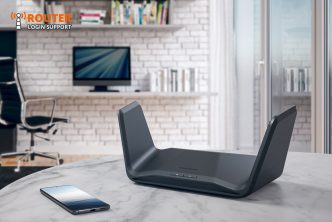0
William Thorne
0 Subscribers
Submit Answer
0 Answers







Three recommended methods to solve “c drive is full” issue in Windows
Method 1. Free up hard disk space by deleting temporary files and other unimportant data
In Windows 10:
1. Use the Windows key + I keyboard shortcut to open the Settings app.
2. Click on System > Storage.
3. Under Storage select the drive you want to analyze. (Note that the This PC drive is the main computer’s hard drive where Windows 10 is installed.)
4. On Storage usage, you can see that Windows 10 categorizes the content based on default folders (e.g., Documents, Pictures, Music, etc.), apps and games, and system files, and you can view the storage usage. Simply click on of the item’s name to get more information.
5. If you want to delete its content, click the view button to open the folder location, and delete the files you don’t need.
6. Go back to Storage usage and click on Temporary files. In this section, Windows 10 will list different kind of temporary files you may want to delete, including Temporary files, Downloads folder, Recycle bin, and more. Click on the button of the content you want to remove and follow the instructions to delete the files.
7. Go back to Storage usage and now click Other. Windows 10 uses this section to list all the folder that couldn’t be categorized. Identify which folders are using the most storage space and click on them to access the location.
8. Select its content, right-click, and select Delete to remove the files and folders.
In Windows 7:
1. Right-click one of your hard drives in the Computer window and select Properties.
2. Click the Disk Cleanup button in the disk properties window.
3. Select the types of files you want to delete and click OK. This includes temporary files, log files, files in your recycle bin, and other unimportant files.
Method 2. Add a larger hard disk
If you find your C drive is out of space frequently or the above recommendation did not help you resolve your issue, it may be necessary to upgrade or add another hard disk to your computer.
a. Add another hard disk
If you have a decent sized hard drive (larger than 100GB for more recent computers) but are running out of space, adding a new hard disk will give you additional storage without having to erase the existing hard drive. This could be either an internal or external hard disk.
b. Replace current hard drive
If your hard disk is less than 100GB, you may want to consider replacing the current hard disk with a new hard disk. Unfortunately, if you do decide to do this, you will need to reinstall the operating system and all the programs again.
c. Upgrade current hard drive to a larger hard drive
Method 3. Extend c drive using third-party partition software
Trying a partition manager software is an easy and efficient way to solve “c drive is out of space” issue. You can extend C drive as you wish and don’t need to worry about data loss. EaseUS Partition Master can help you simply solve this problem.
EaseUS Partition Master, as magic partition software, is a comprehensive hard disk partition management software to let you enjoy with all the powerful functions: Resize and Move partitions, Copy Partition, Copy Disk, Create, merge partitions and much more on MBR disk and GPT disk such as to convert mbr to gpt etc.
Tips: It is important to backup your data before resizing partitions because nothing is 100% secure.
Try To use Disk Defragmentation It WIlOptimie Your Drives
If the C Drive is full use the following steps to fix it :
1. Use the Windows key + I keyboard shortcut to open the Setting
2. Click on System and then Storage.
3. Under Storage select the drive you want to analyze. (Note that the This PC drive is the main computer’s hard drive where Windows 10 is installed.)
4. On Storage usage, you can see that Windows 10 categorizes the content based on default folders apps and games, and system files, and you can view the storage usage. Simply click on of the item’s name to get more information.
5. If you want to delete its content, click the view button to open the folder location, and delete the files you don’t need.
6. Go back to Storage usage and click on Temporary files. In this section, Windows 10 will list different kind of temporary files you may want to delete, including Temporary files, Downloads folder, Recycle bin, and more. Click on the button of the content you want to remove and follow the instructions to delete the files.
7. Go back to Storage usage and now click Other. Windows 10 uses this section to list all the folder that couldn’t be categorized. Identify which folders are using the most storage space and click on them to access the location.
8. Select its content, right-click, and select Delete to remove the files and folders.